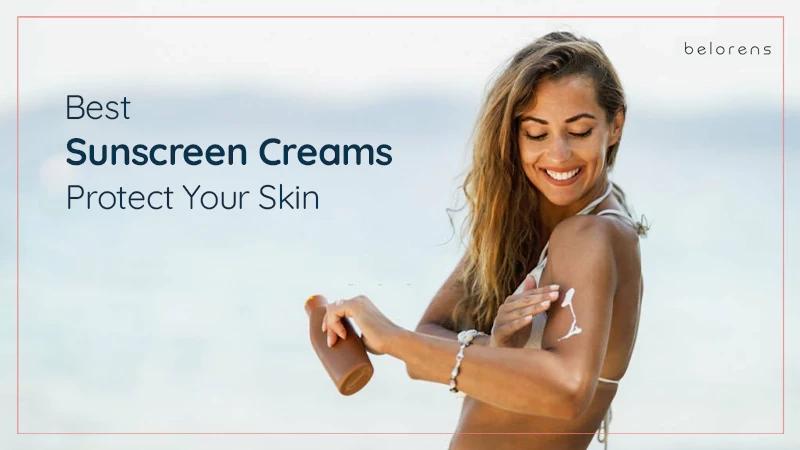Published on 28 Mar 2024 | Last updated on 25 May 2024
Sun Protection: All You Need to Know About SPF, UVA, and UVB
- ByMedical Content Team
- Medically Reviewed byDr. Sabine Kulhanek
Fact checked
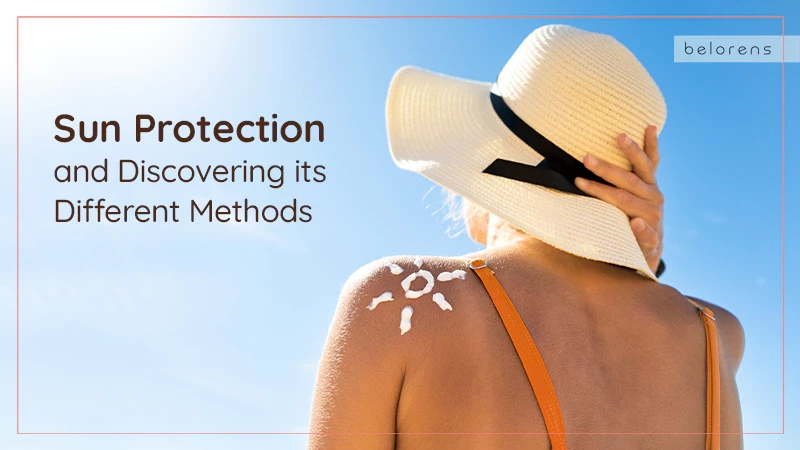
One thing we can all count on every day for the rest of our lives is that the sun will always come up in the morning. However, it is important to consider that sunlight exposure, when happening in prolonged durations, will lead to adverse effects on our skin. But how does the sun cause these effects on the skin? Stay with us to learn about sunlight and its effects, the difference between UVB and UVA, explore different sun protection methods and learn more about the important facts and misconceptions of the field, as well as how to apply sun protection for different activities.
Understanding Sunlight and its Effects
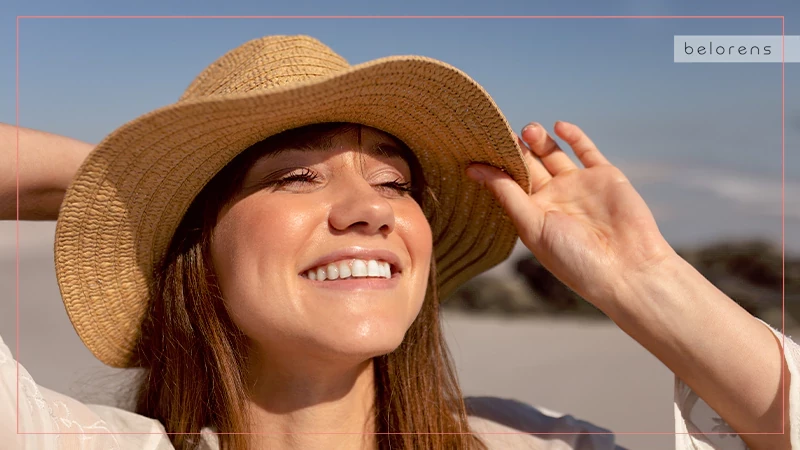
Sunlight is a form of electromagnetic radiation that includes visible light, ultraviolet (UV) light, and infrared (IR) radiation. The spectrum of sunlight is often divided into different regions, such as UV-A, UV-B, UV-C, visible light, and infrared. Each of these components has different effects, which will be discussed later.
Sunlight exerts both positive and negative impacts on the skin. While moderate sun exposure is vital for synthesizing vitamin D, and it is widely used in Psoriasis and Eczema treatment and can enhance your mood, excessive or unprotected exposure to ultraviolet (UV) radiation from the sun can lead to an array of issues. A common misconception is that these negative effects are limited to your skin, while it goes beyond just your skin. Let’s quickly examine these effects. Below is an overview of the effects of sunlight on the skin.
Sunburn
Excessive exposure to UV radiation, particularly UV-B and UV-C, can lead to sunburn. Sunburn manifests as red, painful skin and is a clear indication of damage. It not only causes immediate discomfort but also increases the risk of long-term skin issues, including skin cancer.
Also Read: Why Is My Face Red? Possible Causes and Treatments
Accelerated Aging
Prolonged sun exposure accelerates the skin aging process. UV radiation breaks down collagen and elastin fibers, leading to wrinkles, fine lines, and sagging skin.
Skin Cancer
Overexposure to UV radiation significantly increases the risk of various skin cancers, including melanoma, basal cell carcinoma, and squamous cell carcinoma.
Hyperpigmentation
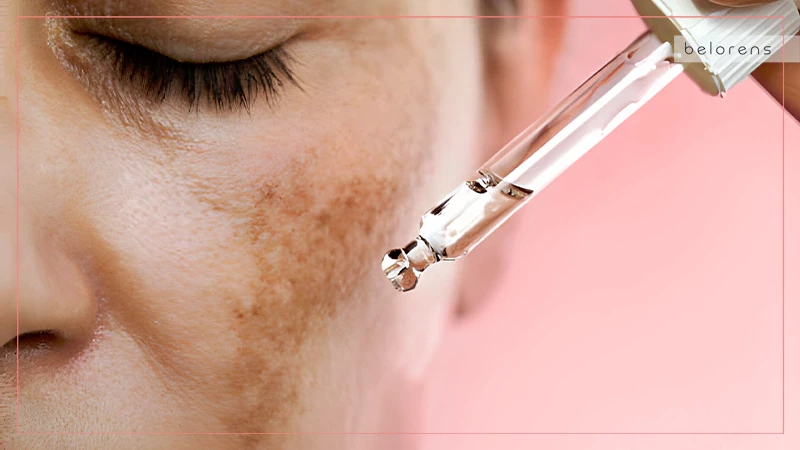
Sun exposure stimulates increased melanin production, resulting in hyperpigmentation. This can manifest as age spots, freckles, or melasma.
Eye Damage
UV radiation can harm the eyes, leading to conditions such as cataracts and damage to the delicate skin around the eyes.
Dehydration
Sun exposure can contribute to skin dehydration. Prolonged exposure to sunlight can strip the skin of its natural moisture, resulting in dryness, flakiness, and an increased susceptibility to irritation.
Weakened Immune Response
Prolonged exposure to UV radiation has the potential to suppress the immune system within the skin. This weakening of the immune response makes the skin more susceptible to infections and other dermatological diseases.
DNA Damage
UV radiation can cause direct damage to the DNA within skin cells. This damage increases the risk of mutations, potentially leading to the development of not only skin cancer but other skin diseases over time.
Photoaging
Chronic exposure to sunlight contributes to photoaging, characterized by the appearance of dark spots, uneven skin tone, and a leathery texture. These visible signs of aging are a result of cumulative sun damage to the skin.
Allergic Reactions
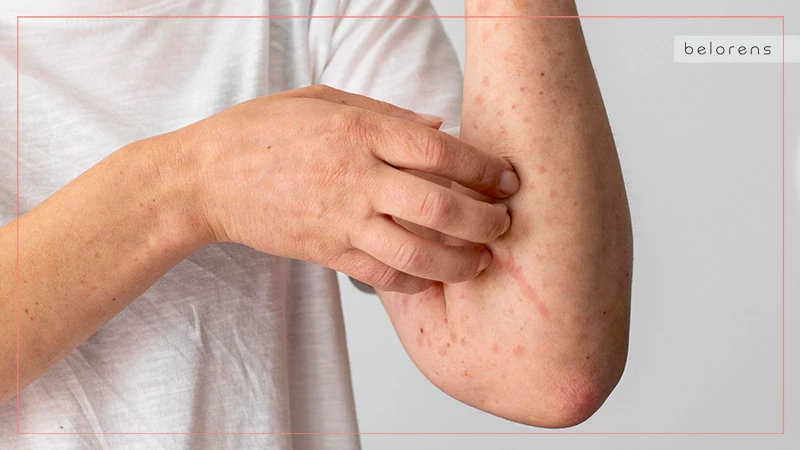
Some individuals may experience photosensitivity, an allergic reaction to sunlight. This condition can manifest as rashes, itching, and redness, making it important for susceptible individuals to take extra precautions when exposed to the sun.
Explanation of Different Types of Sunlight
Sunlight actually comes in two different variations, these being Ultraviolet A and Ultraviolet B, which are shortened to UVA and UVB, respectively. By understanding the differences in the way these work, we can better equip ourselves to combat them. After all, they affect the skin in different ways.
UVA
The sunlight that comes to use in a wavelength range of 320 to 400 nanometers is categorized as UVA. UVA rays are more potent and penetrate the skin more deeply than UVB rays. These rays are present throughout the day and can penetrate clouds and glass. UVA is associated with skin aging and contributes to the development of wrinkles and fine lines. It is also the dominant form of UV radiation in tanning beds.
UVA damages collagen and elastin fibers in the skin, leading to premature aging and loss of skin elasticity. It can cause the formation of free radicals, which can damage skin cells and increase the risk of skin cancer. UVA exposure is linked to the development of pigmentation disorders such as age spots and melasma.
UVB
Sunlight rays projecting at a 280 to 320 nanometers wavelength are known as UVB. UVB rays are responsible for causing sunburn and are more intense during the midday hours. These rays are partially absorbed by the Earth's ozone layer. UVB exposure contributes to the production of vitamin D in the skin.
On the other hand, UVB rays cause direct damage to the DNA in the skin cells, which can lead to mutations and the development of skin cancer. Sunburn is a visible sign of UVB damage, characterized by redness, pain, and inflammation. Prolonged exposure to UVB radiation can weaken the immune system in the skin, reducing its ability to protect against cancerous cell development.
Different Methods of Sun Protection
Sun protection is about much more than applying sunscreen. There are also lifestyle choices and active measures that we can take to further mitigate the effect of sunlight on our skin. In this section, we will cover all of these methods as well as general details and facts about each of them.
Sunscreen
The most common method of sun protection is applying sunscreen, But even using sunscreen has rights and wrongs. Always choose a broad-spectrum sunscreen that protects against both UVA and UVB rays. Don’t forget to measure the sunscreen’s sufficient SPF level, which should be 30 or higher, and apply it generously to all exposed skin. Reapply sunscreen every two hours or more frequently if you are swimming or sweating.
Protective Clothing and Accessories
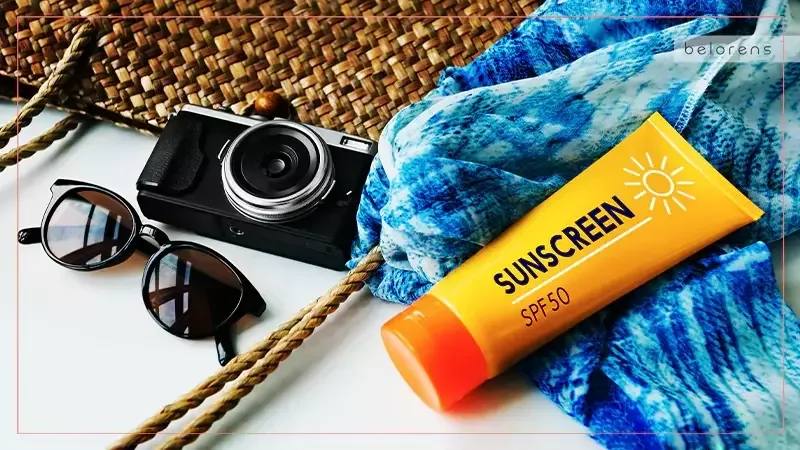
Using clothing and accessories is another very efficient method of preventing sunlight exposure. Take note of the following to efficiently block the sun light with clothes. Wear clothing that covers as much skin as possible. Lightweight, long-sleeved shirts and long pants can provide excellent protection. Dark-colored clothing may offer more protection than light-colored garments. Lately, consider clothing specifically designed with built-in UPF (Ultraviolet Protection Factor) to provide enhanced sun protection.
Hats are also great to prevent your upper face and head from being exposed. Wear a hat with a wide brim to shade your face, neck, and ears. This can provide additional protection for areas that are often exposed to the sun.
Last but not least, wear sunglasses that provide 100% UV protection to safeguard your eyes and the delicate skin around them. Look for sunglasses that block both UVA and UVB rays.
Seek Shade
Limit direct sun exposure, especially during peak sunlight hours (10 a.m. to 4 p.m.). Seek shade under trees, umbrellas, or other forms of shelter. UVA rays are most dangerous and are at their most effective presence in these hours. It is a good idea to generally avoid sunlight during these hours.
Avoid Tanning Beds
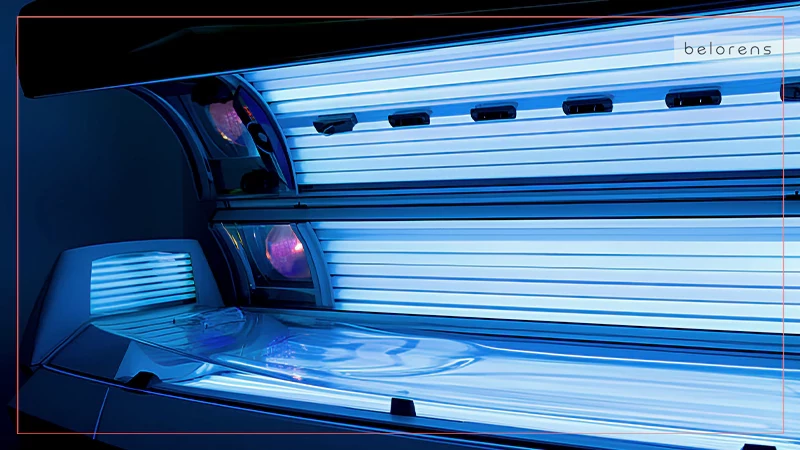
Tanning beds are increasingly popular for getting an easy tan without getting sun on a beach. However, tanning beds emit strong UV radiation of the highest impact that can be harmful to your skin and increase the risk of skin cancer. Avoid their use. Your natural skin shade is beautiful and does not need the risk of cancer to look tan.
Sun Protection for Different Activities
Another question that often is brought up regarding sun protection is about different situations in which we may need to use our methods more intensely or differently. With that in mind, the three most common of these cases are swimming, outdoor sports, and how to use sun protection for children. Here, we will cover all three of them to allow you to get sun protection no matter what!
Outdoor Sports
Participating in outdoor sports exposes the skin to prolonged sun exposure. Athletes engaged in activities like running, cycling, or team sports should prioritize sun protection. Choose a high SPF, water-resistant sunscreen and apply it generously before the activity. Consider wearing moisture-wicking, sun-protective clothing and a wide-brimmed hat for added defense. Reapply sunscreen regularly, especially during extended periods of play, and seek shade during breaks. Protecting your skin is crucial for preventing sunburn and premature aging and reducing the risk of skin cancer associated with cumulative sun exposure.
Children
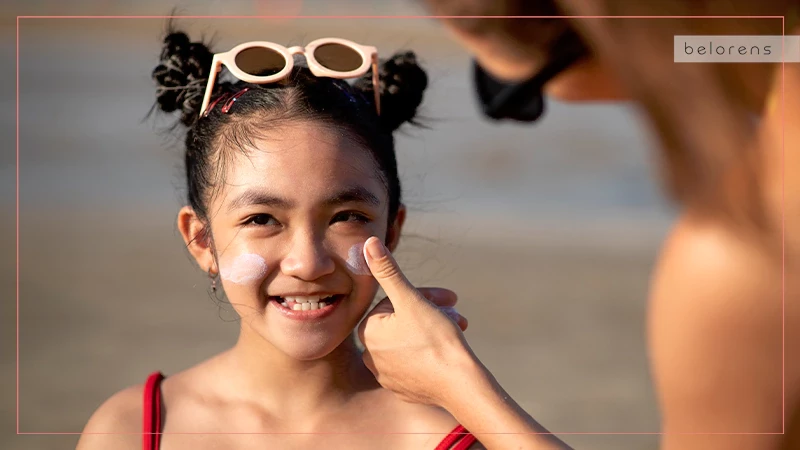
UA is especially harsh on children. Children have delicate skin that requires extra care in the sun. Use sunscreen with a high SPF designed for children and apply it generously on all exposed skin.
Dress them in lightweight, long-sleeved clothing and wide-brimmed hats. Encourage play in shaded areas, especially during peak sun hours. Keep infants under six months out of direct sunlight. Teach older children the importance of sun protection, including reapplying sunscreen during outdoor activities. Regularly check their skin for any unusual changes. Establishing sun-safe habits during childhood sets the foundation for a lifetime of healthy skin practices.
Swimming
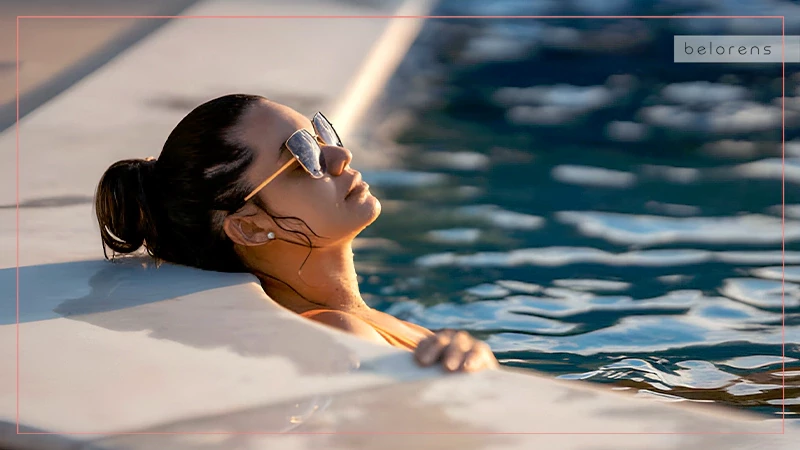
Swimming poses unique challenges for sun protection due to water's reflective nature and the need for water-resistant products. Opt for a broad-spectrum, water-resistant sunscreen with a high SPF. Apply it before entering the water and reapply according to the product's instructions, especially after swimming or towel drying.
Consider swimwear with built-in UPF for added protection. Protect sensitive areas like the face, neck, and shoulders with waterproof clothing or rash guards. Seek shade during breaks, and be mindful of the sun's intensity, which is heightened near water. Prioritizing sun safety while swimming ensures a healthy and enjoyable aquatic experience. Some of the most intense natural sunburns occur when swimming, so pay special attention to how to protect yourself from sunlight while swimming.
Important Points and Misconceptions when Using Sun Protection
Finally, here are some generally important facts about sun protection that you may want to keep note of. We have also included some general misconceptions that directly put your skin at risk when it comes to sunlight and sun protection.
Year-Round Sun Protection
Most people are under the impression that sun protection is only a summer cation and that we can forego it in later seasons, but this could not be further from the truth. Sun protection remains essential throughout the entire year. Irrespective of the season, consistent sunscreen application is a must, covering all exposed skin. Protective clothing and accessories should be worn, and seeking shade when possible is encouraged. To reduce the risk of sunburn, premature aging, and skin cancer, incorporating sun safety into daily routines is paramount.
Avoid Homemade Recipes
Despite the popularity of DIY skincare, homemade sunscreens pose risks. Rigorous testing ensures commercial sunscreens' effectiveness and safety. Homemade versions may lack proper protection, heightening the risk of sun damage. Stick to reputable brands for reliable and tested sun protection. There is also very little chance of you managing to measure the SPF of a homemade sunscreen recipe, so it’s best to generally avoid them.
Also Read: Best Sunscreen Creams in 2024: Protect Your Precious Skin from the Sunlight
Sunscreen Does Not Cause More Damage than Protection!
There are many online discourses and conspiracy theories that promote the false fact that sunscreens themselves cause cancer and increased weakening of skin to the sun. This claim is unfounded and contradicts extensive scientific research. Sunscreen, when used correctly, is a crucial tool for preventing skin damage and reducing the risk of skin cancer.
Commonly Missed Areas
We all have a general understanding of how and where to apply sunscreen, but what if I told you we miss critical areas all the time? Certain areas are frequently overlooked when applying sunscreen, such as ears, lips, the back of the neck, and the tops of feet. Paying extra attention to these spots and using SPF lip balm ensures comprehensive protection. Thorough application minimizes the risk of uneven sun exposure.
Specific Considerations for Fair, Medium, and Dark Skin Tones
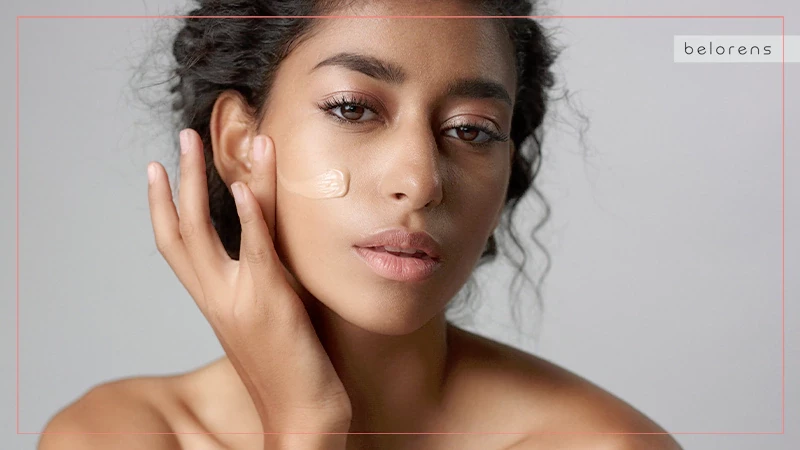
Distinct melanin levels in different skin tones influence susceptibility to sun damage. Fair skin, prone to burning, requires higher SPF. Medium-toned skin may tan but is also susceptible to burning, necessitating broad-spectrum protection. While dark skin is less prone to sunburn, it is not immune to UV damage.
Skin type significantly impacts the risk of skin cancer. Fair-skinned individuals are more susceptible, burning easily. However, individuals with darker skin tones can also develop skin cancer, albeit less frequently. Regular skin checks, sun protection measures, and early detection are crucial for everyone, irrespective of their skin type. Understanding individual risk factors empowers proactive steps for maintaining skin health.
Regardless of skin tone, prioritizing sun protection is crucial to prevent skin damage and reduce the risk of skin cancer, so apply the tips of this list with whatever skin tone you have!
To learn more about skin tones, read All You Need to Know About Skin Tone and Undertone
Conclusion
We took a good moment to learn how sunlight damages our skin as well as the different rays that it projects. We learned how to use sunscreens, as well as other methods to keep our skin safe. It was also important to cover sun protection when doing special activities and for children. Lastly, we covered some generally important tips about skin tone differences when it comes to sun protection, and we also dispelled some common myths and misconceptions.
Always apply generous amounts of sunscreen and use at least a couple of other sunscreen protection methods to ensure cancer-free skin and healthy eyes well into your later years.
Sometimes, we forget to take care of our skin, and through the years we get spotted and wrinkled skin. But don’t worry! With Belorens’ elite cohort of medical professional, you can easily rejuvenate your precious skin with procedures like Laser Skin Resurfacing.
FAQ
Can I get sunburned on cloudy days?
Yes, UV rays penetrate clouds. While they are not as potent, they are still a risk. It's essential to use sun protection even on cloudy days.
Can sunscreen cause skin allergies?
Allergic reactions to sunscreen are rare. If you have sensitive skin, choose a sunscreen labeled as hypoallergenic and perform a patch test to rule out any adverse reactions.
Is it true that higher SPF values are harmful?
No, higher SPF values indicate increased protection against UVB rays. It's essential to choose an SPF suitable for your skin type and the duration of sun exposure.
Do sunscreens cause vitamin D deficiency?
Sunscreen use does limit vitamin D synthesis to some extent. However, maintaining adequate vitamin D levels can be achieved through a balanced diet and supplements if necessary.
Are natural or mineral sunscreens safer?
Natural or mineral sunscreens containing zinc oxide or titanium dioxide are generally considered safe. However, their effectiveness may vary, and it's essential to choose products with adequate protection levels.
Can I get enough vitamin D without risking sun damage?
Yes, you can obtain vitamin D from dietary sources and supplements. If sun exposure is necessary, limit it to safe levels and always use sun protection to minimize the risk of skin damage.



